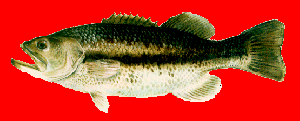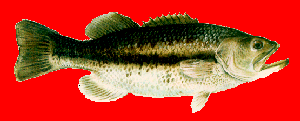3.3.1 Growth enhancement
It is relevant to say that fish have not been stringently selected for rapid growth during domestication, and also that growth is fish is relatively plastic and the final possible dimensions of body size are generally less rigorously controlled than is the case with mammals. It is not surprising, therefore, that growth enhancement in fish has, to date, turned out to be much more successful than with large mammals, although not all efforts have been crowned with success and some species seem to be rather resistant to such improvement.
Each line of transgenic fish has to be evaluated as a separate and distinct scenario. Thus, parameters such as the species of fish used, the origin of the growth hormone gene employed and the choice of promoter, although the most obviously crucial variants, must be considered alongside the copy number of the transgene integrated and any possible position effects encountered.
The most impressive examples of transgenic growth enhancement are in Atlantic salmon Salmo salar, Pacific coho salmon Oncorhyncus kisutch, common carp Cyprinus carpio and tilapia Oreochromis niloticus.
Some observations in the transgenic fish research: first, responses of fish to growth enhancement seem to be very variable with species, and in some species the gains are very modest. Secondly, the response is highly variable between different transgenic lines of the same fish species and the same construct, so obviously it is essential to produce numerous lines and to select the optimal performers. A third observation is that the constructs used are of very diverse origin. Some researchers' view is that viral promoters should be avoided and that homologous or near-homologous promoters and coding sequences should be used, both to ensure good expression and to minimize the concerns of the consumer. A last comment is about future markets. It is arguable whether the market presently needs growth-enhanced salmonids, but surely there is a future for growth-enhanced tilapia if the farmer and the consumer in the developing world can be persuaded that they are safe, both in terms of environmental impact and in the human food chain.
3.3.2 Cold tolerance
There
are two aspects to this topic, namely cold tolerance and resistance to
freezing. There is a long term possibility that cold tolerance could be
enhanced in fish by endowing them with extra copies of ![]() -desaturase
genes. The protein made by this gene is cold-inducible, at least in carp,
and appears to help maintain membrane fluidity at low temperatures via
an effect on lipid molecular confirmation. The only other possible avenue
of exploration is that that is some rather weak evidence that antifreeze
production may increase cold tolerance, at least in goldfish, by some mechanism
not yet understood.
-desaturase
genes. The protein made by this gene is cold-inducible, at least in carp,
and appears to help maintain membrane fluidity at low temperatures via
an effect on lipid molecular confirmation. The only other possible avenue
of exploration is that that is some rather weak evidence that antifreeze
production may increase cold tolerance, at least in goldfish, by some mechanism
not yet understood.
The main body of work relevant to cold tolerance is the attempted induction of freeze resistance in Atlantic salmon. Faced with the fact that fish of this species often die in sea cages on the Newfoundland coast when winter brings many icebergs southwards, scientists in St. Johns, newfoundland set out to isolate the genes coding for antifreeze protein from certain species of arctic fish, and to use these in transgenic experiments with Atlantic salmon. Most of this work has involved the antifreeze gene from the winter flounder Pseudo-pleuronectes americanus. Using this gene in combination with its own promoter, lines of Atlantic salmon were obtained which were all achieved and convincingly demonstrated but, unfortunately, the level of AF protein production is approximately 100 times less than is needed to make the salmon effectively resistant to freezing (Hew and Gong, 1992). The research group have stated aims of using stronger promoters and designing more physiologically effective synthetic antifreezes, but to the best examples of the application of the transgenic technology to a practical problem in fish husbandry, but unfortunately there is still some way to go to reach the stated objective.
3.3.3 Disease resistance
If fish farmers lie awake at night worrying, they are likely to be anxious about disease in their fish. Sadly, the tangible benefits of transgenesis in this area are even less immediate than with cold tolerance. Work is in progress to make fish transgenic for anti-sence or ribozyme sequences designed to target and inactivate messager RNA specifying viral proteins. More immediate benefit to aquaculture might be making fish transgenic for a fish lysozyme gene, a sequence which specifies a natural anti-microbial protein.
A development relevant here is the development and use of DNA vaccines. There is already good evidence that DNA injected into the muscle of adult fish will lead to long term localised expression of the relevant protein.
3.3.4 Induced sterility
Fish are currently most frequently made sterile by induced triploidy via the application of pressure or heat shock to the fertilized eggs. This procedure, although widely used to good effect, is leaky, in that a few fertile fish do get through. There is, therefore, interest in the possible production of sterile fish by exploiting transgenesis. Additionally, since fertile transgenic fish might constitute an environmental hazard should they escape, there is interest in producing double transgenics, namely fish which are transgenic for, say, a growth enhancing gene but also transgenically sterile. The proposed scheme is to antagonise the production of gonatropin releasing hormone (GnRH), a hormone necessary for gonadal development is fish, by making fish transgenic for anti-sence or ribozyme sequences directed against GnRH messager RNA. Such fish could, as desired for breeding purposes, be rendered fertile by injection of GnRH. This methodology has already proved effective in mice (Mason et al., 1986), It should also be stressed that effectively sterile strains of farmed fish would be a desirable commodity to aquaculture in their own right, quite apart from any additional transgenically-endowed trait.

